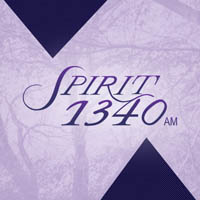Excerpted from: Thoughts on Leadership, Church and Culture
Every year, especially at Christmas time, one of the most common questions I receive from people in my church and online is “What Bible version should I buy as a gift?” It’s a great question, so I decided to give my answer in a post. (You may want to read THIS POST first, so you’ll understand my philosophy in not answering the question with a single answer.)
Let me make this VERY clear. I am not writing to theologians or scholars with this post…mostly because I am not one. I have been a Bible student for many years, I am a seminary-trained pastor, I have a couple master’s degrees and consider myself well-read, but this is one subject that often divides the best of scholars, and that’s not my intent with this post. This is not written for scholars, but for the average person in my church or those just beginning to become a Bible student.
So, which Bible version should you buy?
First, you should understand that every Bible we are reading today, including the King James Version (KJV) is a translation from the original text. Most of us don’t read Greek or Hebrew very well. The translators of all the major Bible translations have each attempted to take the original language and write a Bible that helps us grow in our walk with Christ.
As you can see from the diagram in this post, there are different approaches to this, with the goal leaning either more towards making it readable (thought for thought) or making it as close in accuracy to the original text (word for word).
I like to explain it like this by adding another phrase. The translators have chosen one of these approaches:
Word for word – This is where every word is attempted to be translated from the original language to an English word. If you want to be a serious student of the Bible, you’ll want a Bible using this approach. While this makes the version more accurate, it may be harder to understand at times, because we have sometimes changed the order in which we say something as much as we changed the words. The original language, for example, did not always follow the same sequence of sentence structure you learned in English class. This is one reason there are newer, more “modern” translations, trying to remain accurate, but make it more readable. (The ESV, HCSB, KJV, NKJV would be examples of this approach.)
Phrase for phrase – This is the middle of the two approach. I don’t know who originate this term, but I like it explain this approach to translations. In this attempt, instead of word for word, the translators broke sentences down into smaller phrases in the translation, so they could adapt to more of the sentence structure we use. This approach makes the Bible easier to read and is still considered an accurate translation, but may not be as accurate as the previous approach. (The NIV or NLT would be examples here.)
Thought for thought – This is where the translators, more concerned that the translation be readable, took an entire passage and translated it into the most modern language they can find. This is often called a “paraphrase” of the Bible. It can be fun to read and help illuminate a passage, but shouldn’t be considered extremely accurate when trying to apply the Bible. (The Message is the most popular example here.)
In reality, all the translations use parts of each of these approaches, but, as the diagram indicates, most will fit somewhere along this continuum.
With that explanation, here are some common versions all of which I use on a regular basis:














